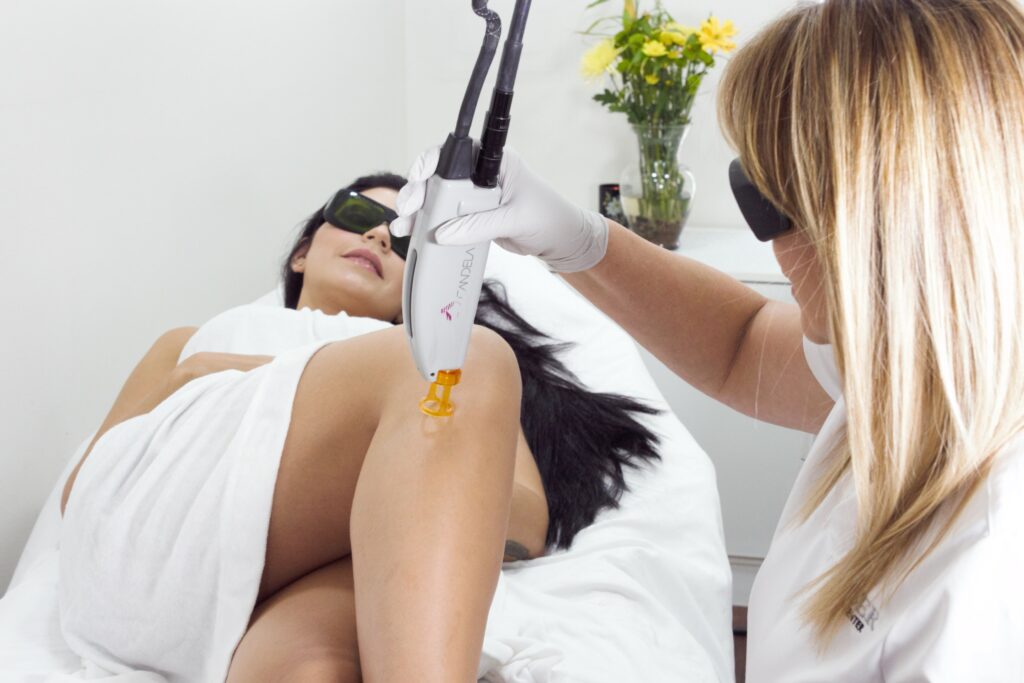Stretch marks, those visible lines that appear on the skin, are a common aesthetic concern for many people. They can arise for various reasons, such as rapid weight changes, pregnancy, growth during puberty, or even due to genetic factors. Although they are not harmful to health, many people seek ways to prevent and reduce their appearance. In this article, we will explore how to prevent and reduce stretch marks using scientifically backed approaches.
What Are Stretch Marks?
Stretch marks, also known as striae, are scars that form when the skin stretches beyond its capacity. This occurs in the dermis, the middle layer of the skin, and usually manifests as red, purple, or white lines, depending on their stage of development.
Common Causes of Stretch Marks:
- Rapid Growth: During adolescence, the body can experience accelerated growth, which can cause the skin to stretch quickly.
- Pregnancy: The abdomen and breasts are common areas where women develop stretch marks during pregnancy due to the expansion of the skin.
- Weight Gain or Loss: Drastic changes in weight, whether gain or loss, can lead to stretch marks due to the rapid stretching or contraction of the skin.
- Hormonal Factors: High levels of certain hormones, such as glucocorticoids, can weaken collagen fibers in the skin, making it more susceptible to stretch marks.
Preventing Stretch Marks: Is It Possible?
Completely avoiding stretch marks can be challenging, especially if there are genetic factors involved. However, there are preventive measures that can minimize their appearance:
1. Maintain Optimal Skin Hydration
Regular skin hydration is crucial for maintaining its elasticity. Using moisturizing creams based on ingredients like cocoa butter, shea butter, and almond oil can help keep the skin soft and flexible. A study published in the British Journal of Dermatology suggests that the topical application of moisturizers can improve skin elasticity and reduce the risk of stretch marks.
2. Diet Rich in Essential Nutrients
A balanced diet rich in vitamins and minerals is essential for skin health. Nutrients such as vitamins E and C, zinc, and silicon play a significant role in collagen production, the protein that gives structure and strength to the skin. Incorporating foods like nuts, citrus fruits, leafy greens, and fatty fish can help improve skin health from within.
3. Maintain a Stable Weight
Avoiding drastic weight fluctuations can reduce stress on the skin. If you are planning to lose or gain weight, it is advisable to do so gradually to give your skin time to adjust. Regular exercise not only helps maintain a healthy weight but also improves blood circulation, contributing to healthier skin.
4. Pregnancy Care
Pregnant women can take specific preventive measures to minimize the appearance of stretch marks. The regular use of moisturizing creams and oils designed for pregnancy, such as those containing hyaluronic acid and centella asiatica, can be beneficial. A study in Clinical, Cosmetic and Investigational Dermatology found that creams with centella asiatica can improve skin elasticity and reduce the formation of stretch marks during pregnancy.
Effective Treatments to Reduce Stretch Marks
If you already have stretch marks, you are not alone. Fortunately, there are treatments that can help reduce their appearance, though it’s important to remember that not all stretch marks will disappear completely.
1. Retinoid Therapy
Retinoids, derivatives of vitamin A, are known for their ability to improve the appearance of stretch marks. According to a study published in the Journal of Clinical and Aesthetic Dermatology, creams with tretinoin can stimulate collagen production and promote cell renewal, which improves the texture and coloration of stretch marks. However, it is important to avoid their use during pregnancy due to potential risks to the fetus.
2. Microdermabrasion
Microdermabrasion is a cosmetic procedure that exfoliates the outer layer of the skin, which can stimulate cell regeneration and improve the appearance of stretch marks. This treatment is most effective on recent stretch marks and requires multiple sessions to achieve optimal results.
3. Laser and Light Therapy
Fractional laser therapy and intense pulsed light (IPL) are advanced options for reducing stretch marks. These treatments work by penetrating the deeper layers of the skin, stimulating collagen and elastin production. A study in Dermatologic Surgery showed that fractional laser can significantly improve the texture and coloration of stretch marks.
4. Hyaluronic Acid
Hyaluronic acid is a popular ingredient in skincare products due to its ability to attract and retain moisture. Applied topically, it can improve skin hydration and reduce the appearance of stretch marks. Additionally, injectable hyaluronic acid has also been shown to help in skin tissue regeneration, which contributes to reducing stretch marks.
Natural Treatments: Are They Effective?
Some people prefer natural options for treating stretch marks, such as rosehip oil, aloe vera, and shea butter. While these ingredients can improve skin hydration and softness, scientific evidence on their specific effectiveness for reducing stretch marks is limited. However, since they are safe and well-tolerated, they can be a complementary option for those seeking more natural treatments.
Conclusion
Stretch marks are a common aesthetic concern but are not a medical problem. Prevention is key, and keeping the skin hydrated, maintaining a balanced diet, and a stable weight can significantly reduce the risk of developing them. For those who already have stretch marks, there are multiple effective treatments, from retinoid creams to laser therapies. It is important to remember that each skin type is different, and what works for one person may not be equally effective for another. Consulting with a dermatologist is essential to find the most suitable treatment according to your specific needs.
